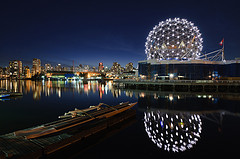Erik Buckingham approximately 200 words
INTD 105-19: Science Writing
William Cronan and Seuss Spruce Graff & Berkenstein Arguments
By: Erik Buckingham
Most people will tell you that a waterfall in the woods is wilderness, but the grass and trees behind their house is lesser. I wholeheartedly endorse William Cronan’s claim that if wilderness, “can start being just as humane as it is natural, then perhaps we can get on with the unending task of struggling to live rightly in the world” (Cronan, 109). The Seuss Spruce’s imperfection is the core of its beauty. Its curved trunk symbolizes the positive neglect of a grounds crew after a harsh storm.
Adding to Cronan’s argument, I would point out that we can neglect nature while coexisting with it. After the storm, Geneseo laid gravel pathways and set up metal benches in the Seuss Spruce’s surrounding area. Cronan’s theory that a person with empathy and an innovative mind can experience wilderness anywhere (Cronan, 108) sheds light on the difficult problem of whether or not the college should trim the Seuss Spruce. If we have successfully built a quad around the tree, why can’t we learn and live with the Seuss Spruce growing freely? When we stop struggling to live rightly, we learn to coexist with the unconventional.

I like your argument and how you are adding new examples that can support Cronon’s thoughts. Your example about the benches around the tree and how it supports the idea that one can experience wilderness anywhere is a good way to support Cronon’s idea about the false dualism between the tree in the garden and the forest. Your rhetorical question is also powerful and well worded.
I like how you were able to successfully add on to cronan’s original argument and use your object as an example of “positive neglect.” I find the irony interesting that in our efforts to preserve the tree, we keep killing it by cutting it’s branches and not allowing it to grow.
Hi Erik, I love the work in your first paragraph–the way you’re thinking of Cronon’s question about wilderness being “humane and natural”–and how you see in the neglect of the grounds grew after the lightning strike, in the curve of the tree’s trunk, that very mixture. Lovely work! I’d love to know more about the problem of trimming the spruce. Is this an issue? Do people disagree about this? I’d like to see you go into a lot more detail about what it would mean to trim the spruce and what it would mean not to trim it. How would each choice reflect a different arrangement of the human relationship to wilderness? In your description of the path and the benches, what relationship are you seeing between humans and nature? How does this relationship relate back to Cronon, and how is it different? Really nice work here with concrete evidence from your object–I’d love to see even more. Thanks for this!